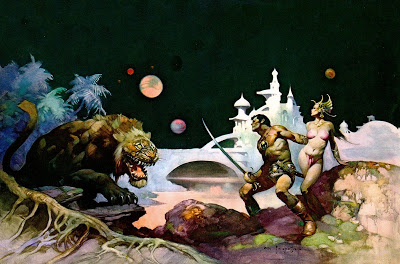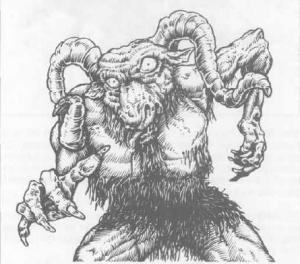The fifth part of the Creature Collection with more Monsters and Undead.
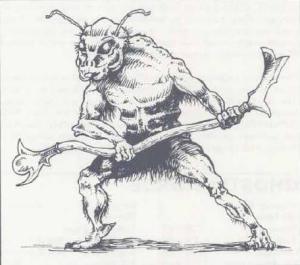
The Hivebrood is a swarm of insects that reproduces by putting larvas into humanoid bodies which then grow to turn the person into one of them. They are all controlled by a hivemother. Maybe back in the early 80s that concept was still original. But probably not. The most interesting ability they have is that the broodmother is able to turn larvas into a more powerful form than normal drones to become hiveminds. Hiveminds have the interesting ability that they can gain any ability from any creature they eat, which includes any spells memorized by spellcasters they consumed. When in danger, a hivemind can release a chemical cloud that spreads through the hive and shares a single ability with all the regular drones for three rounds, after which it is lost. If that ability is something like casting fireball, the result can be utterly devastating for the PCs.
The Ice Wolf is simply a different name for the well known winter wolf and has exactly the same abilities. (Demon Dogs +1)
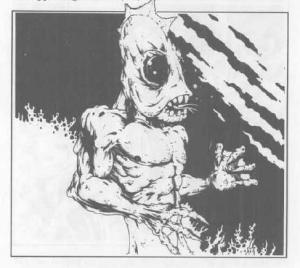
The Kopru is a classic monsters from X1 The Isle of Dread. It’s fame is mostly tied to that classic adventure. They have three tails which they use to grab enemies and have a special power to control the mind of any creature and have full accees to it. I did some snooping around if the kopru predates aboleths that are surprisingly similar, and it turns out they both appeared in the same year. And in addition, The Isle of Dread and Dwellers of the Forbidden City were both written by Zeb Cook. So yeah, they are basically the same idea slightly modified for B/X and AD&D. This is the same Cook that did the “Cook Expert” set of the “Moldvay/Cook” edition and also the Kara-Tur and Planescape settings. Why isn’t he more famous? He’s probably the second most influential person to make D&D into what we know now. Aboleths are a lot cooler than kopru, though.
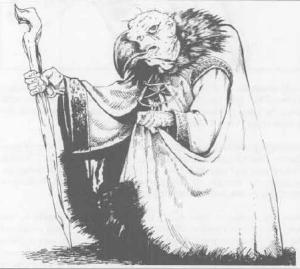
The Nagpa is from the adventure X4 Master of the Desert Nomads, which is one of my favorite ones. And also made by Zeb Cook. Not as cool as the Bhut but better than the Juggernaut from the same adventure. They are humanoids with vulture heads and various magical powers like making objects within 20 meters to burst into flames or decay, paralyse all lawful characters within 3 meters, and cast darkness and illusions. It took about 30 years until designers realized that just four or five spell abilities are enough for an interesting encounter and you don’t need a spellcasting monster to have as many spells as a high level wizard. Continue reading “Fantasy Safari: Creature Collection (BECMI), Part 5”

